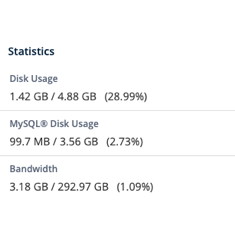3 More CFA® Exam Questions
March 4th, 2013
First of all it should go without saying, you have to pass the CFA exams yourself, it isn’t like “Who wants to be a millionaire?”, you don’t get to phone a friend when you get stuck. Secondly if you’re going to go to the trouble of finding my blog, then my phone number, which only appears on my resume, I’d appreciate it if you called me about a potential job offer, not some CFA questions you read in a book and are unsure how to solve.
I most definitely don’t have all the answers, I’m just a guy. Nonetheless here are the questions and my attempt to recollect the answers having not studied this material in well over a year. In future it would be better to post questions like these to an online forum where multiple people could attempt them. I’m no longer recommending any particular CFA forum.
You know what else I don’t recommend if you are a CFA Candidate? Don’t blog. Because if you blog someone will take your content, your hard work, your intellectual property and claim it as their own. Ignoring the law in whatever country you happen to be from or currently live in, this seems to be in clear violation of Standard I(C) Misrepresentation. So not only did I spend my own free time helping other people, Abhishek Chaudhary decided to take credit for my hard work.
I do mind, the Dude minds. This will not stand, ya know, this aggression will not stand, man.
Question 1
You buy a share of Microsoft in 1987 for $0.20 per share. You sell the stock for $32/share in 2012. What was your total return over your holding period? What was your annual return over this time period?
The return over a holding period is calculated as follows:
- HPY = (P1 – P0 + D1) / P0 which in our case is: (32 – .2) / .2 = 159
The next part of the question is a bit less clear, the question is probably asking for the effective annual yield. Yield and return can be used almost interchangeably. Reading comprehension is a big part of the CFA exam in addition to memorization and ability to calculate solutions. The Investopedia provides the following formula:
- HPY^(1/years held) all minus 1 which in our case is 159^(1/25) – 1 = .2248
Question 2
Stock A is selling for $100 per share today. You believe each share of Stock A will sell for $110 in one year. Your next best investment generates a 5% return per year. a. Is Stock A worth buying at $100 per share today? Why or why not? b. What is the highest price you would be willing to pay for Stock A? c. You find Bond B which promises 18% return per year. Does this change the price you are willing to pay for Stock A? If not, why not? If so, what is the new price you are willing to pay for Stock A?
Yes getting ten dollars profit in one year is better than getting five dollars profit in one year. A stock worth $110 in the future with interest rates at 5% is worth 104.76 now.
The final part of the question makes it abundantly clear that 18% is better than the return on the stock if you pay $104.76 per share, in order for the stock to become a better investment than the bond the current price must be 93.22 or lower.
Question 3
You buy a stock in Company B on January 1, 2000 for $100. The stock pays you a 1% dividend every quarter on the last day of the quarter. On January 1, 2002, the stock is selling for $100. Please assume that all dividends are reinvested in the stock, and that the stock price has remained at $100 throughout the 2 year period. What was your return over the 2 year holding period? What was your annual return?
This question is more difficult and would be better illustrated with a spreadsheet perhaps, but in the CFA exam you have your calculator and your wits, sometimes you lose one or the other… Where it says “Please assume that all dividends are reinvested in the stock” makes this question more complicated, but given that on the CFA Level 1 exam the answer has to be one of A, B, or C, the solution is most likely to use one of the many return or yield formulas or the Time Value of Money function on your calculator.
One thing that you have to learn is most yields are stated annually, 1% annually is actually .25 per quarter.
- PV = -100
- FV = 100
- PMT = .25
- N = 2 * 4
- I = CPT
I or I/Y or yield is .25 using my BA II Plus which I dug out to answer these questions, because in the exam you don’t get a laptop or Excel, knowing how to calculate the answer with Excel won’t help you come exam time. This is the quarterly return. Annualizing a quarterly return isn’t hard, but with the current numbers the answer comes back at a suspicious 1%. Which if I’m incorrect means I made a false assumption or this question is trying to be overly cute. Replacing PMT with 1 above yields an I/Y value of 1, but if you assume that is a quarterly rate and convert it to an annual rate using the formula linked to above, the answer is then .0406.
In a real exam you are very much pressed for time, you can’t look up formulas on the Internet, but sometimes you have to perform a calculation more than once just to be sure. Sometimes the answer will state .0406 another time it might be stated as 4.06%, some questions might give you two answers that differ by a factor or 10 or 100. In the real CFA Level 1 exam every question is multiple choice and you have 1.5 minutes to answer each question, some questions will have two or more parts, that doesn’t mean they’ll give you more time. Sometimes you can get away with calculating only one part of a question and then use logic to deduce the other portion.
The other part of the question is easier:
- P1 = 100
- P0 = 100
- D = .25 * 8 (approximately)
The answer for holding period yield is about 2%. Many, many times on the CFA Level 1 exam it will say choose the answer closest to the correct value. Hopefully on an exam you can use these numbers to circle the correct answer, the formulas I’ve used I think are correct.
Even though I was unemployed, I did have stuff to do at 10:00 AM on a Monday morning. I don’t mind trying to help people, well I do mind trying to help some people… I’ve made a lot of study materials available free of charge, some people think I should charge for them. It is definitely better to contact me via email or leave a blog comment than phone a stranger with questions regarding their blog. It is also probably in your best interest if you are stuck on a CFA question to find a study group or post questions to an online forum.
For the record, I passed the Level 1 CFA exam all by myself using primarily the official CFA curriculum books I eventually passed all three CFA exams.
This entry was originaly posted on , it was last edited on and is filed under: Advice and tagged: CFA®, Exam, Finance.





I still don’t understand why I was phoned? When did it become normal to call a complete stranger up and ask them a math problem? Where is the official answer key to these problems? Having spent way too much time studying for the CFA Level 1 exam, I wouldn’t recommend doing any problems you don’t have the answer key for, I don’t even think you should attempt problems that are not in official CFA Level 1 exam format.
I can’t help but think this is someone’s assignment…